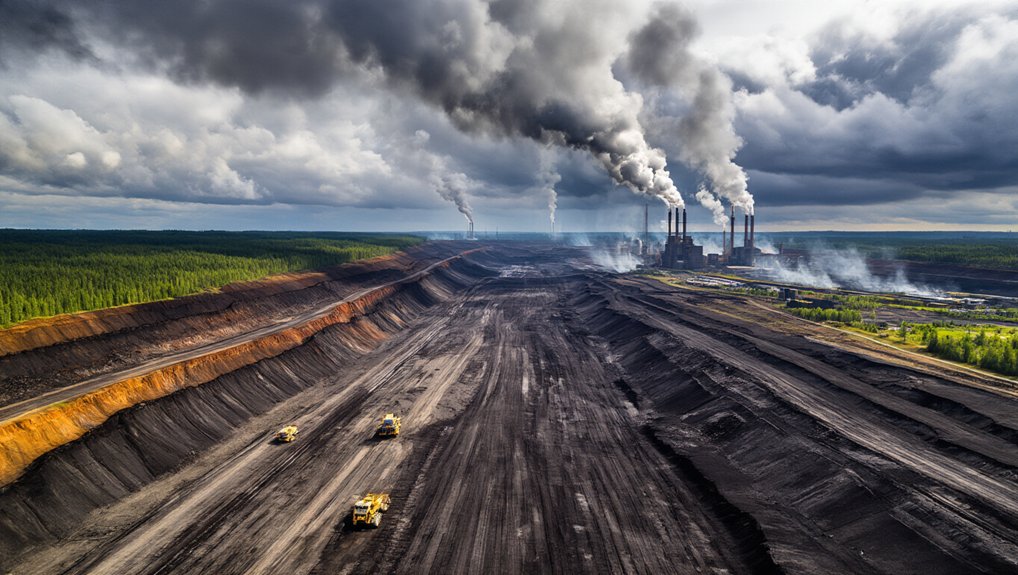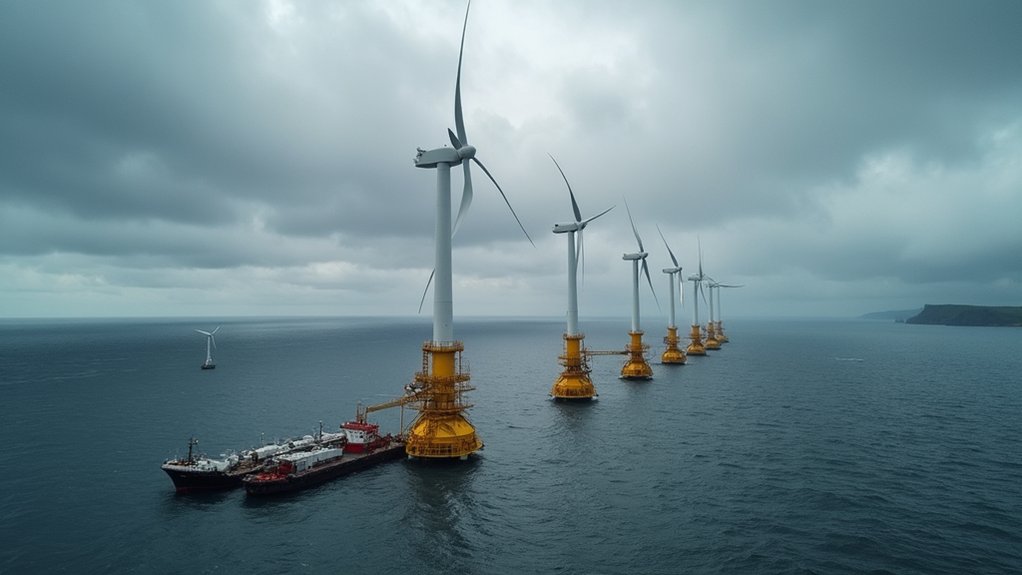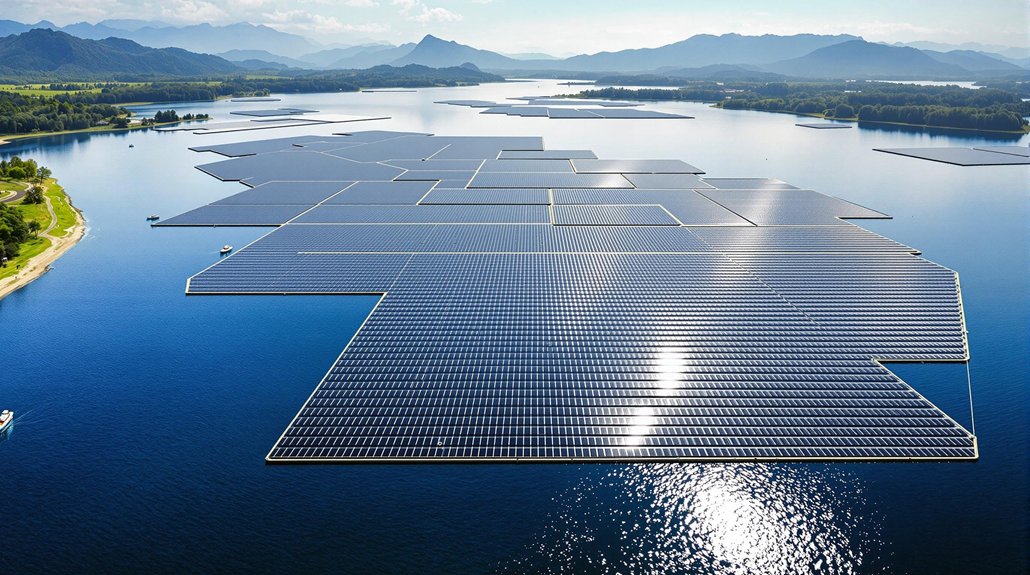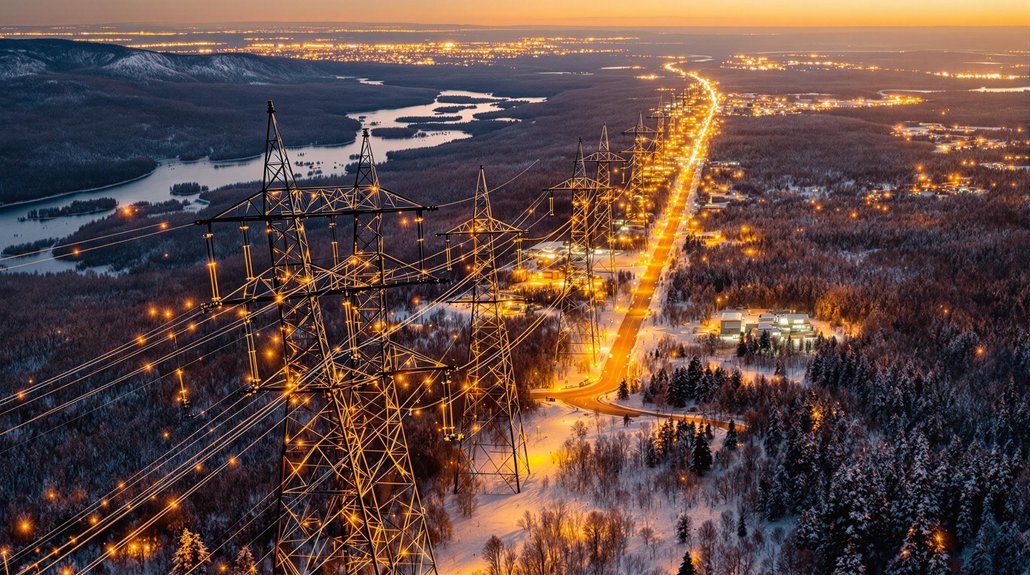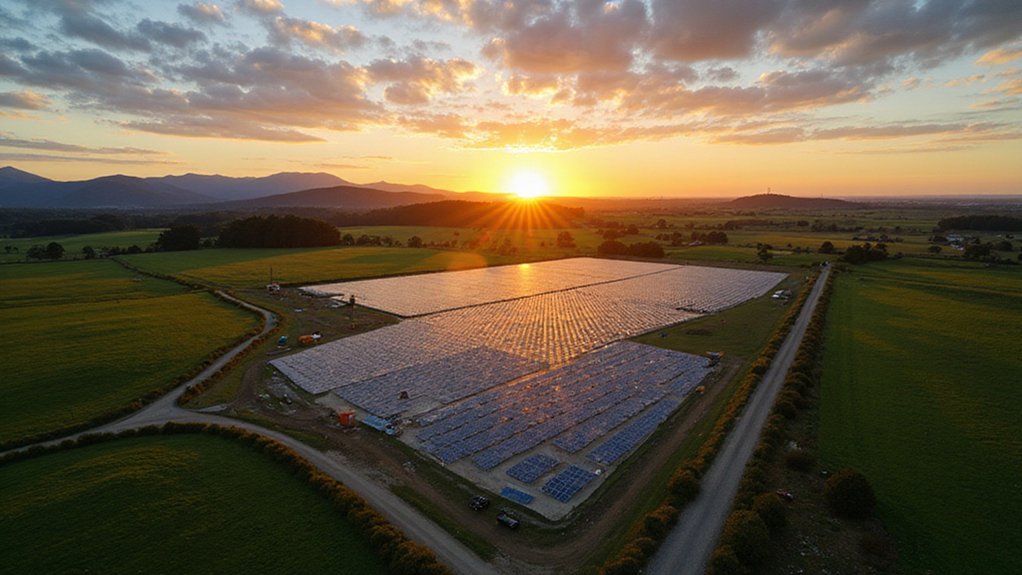Reality has a funny way of ignoring wishful thinking. While climate activists dream of a coal-free future, global demand for the black stuff jumped 1.2% in 2024. That’s 8.7 billion tons, folks. And 2025? Looking just as sooty.
The numbers tell a brutal story. Asia’s appetite for coal keeps growing, with India and China leading the feast. Sure, China’s growth might plateau next year, but India’s picking up the slack. Their renewable energy push can’t keep pace with electricity demand. India proposed 38.4 GW of new coal capacity in 2024, the highest annual total ever recorded.
Meanwhile, the US and EU pat themselves on the back for cutting coal use – down 60 million tons in America, 35 million in Europe. Noble efforts, really. Too bad Asia’s increases dwarf those cuts. The UK even eliminated coal power capacity in September 2024, joining the ranks of coal-free nations.
Western coal cuts: 95 million tons. Asia’s coal surge: utterly dwarfing those noble gestures.
Here’s the twist: coal remains dirt cheap. Prices are expected to drop 27% in 2025, then another 5% in 2026. Oversupply meets weakening demand, creating a buyer’s market. For emerging economies scraping together every penny for development, coal’s bargain prices beat green alternatives every time.
The infrastructure trap runs deep. Decades of investment created a global network of coal-fired power plants that refuse to die quietly. These facilities have decades of life left, and nobody wants to write off billions in sunk costs. While Trump promised to save the industry, U.S. production actually declined 34% during his administration.
Steel makers need coal’s intense heat. Cement producers depend on it. Two-thirds of coal consumption goes straight to electricity generation – that’s a lot of light switches depending on ancient carbon.
Energy security trumps environmental concerns for most nations. Coal sits in the ground, waiting. No shipping lanes to protect, no pipeline politics, no volatile spot markets. Countries treat domestic coal reserves like insurance policies against geopolitical chaos. When the lights threaten to go out, climate pledges take a backseat.
Southeast Asian nations are ramping up imports while Australia, Indonesia, and Mongolia happily feed the beast. Record trade volumes in 2024 proved one thing: coal’s not going anywhere soon.
The global economy remains shackled to this 19th-century fuel, and breaking free requires more than good intentions and UN conferences. It needs cold, hard alternatives that match coal’s reliability and price. Until then, the furnaces keep burning.
References
- https://www.iea.org/reports/global-energy-review-2025/coal
- https://globalenergymonitor.org/report/boom-and-bust-coal-2025/
- https://www.iea.org/data-and-statistics/charts/global-coal-consumption-2000-2026
- https://blogs.worldbank.org/en/opendata/weakening-demand–steady-supply–what-s-driving-coal-s-decline-i
- https://viracresearch.com/coal-consumption-demand-remains-stable-in-2025/
